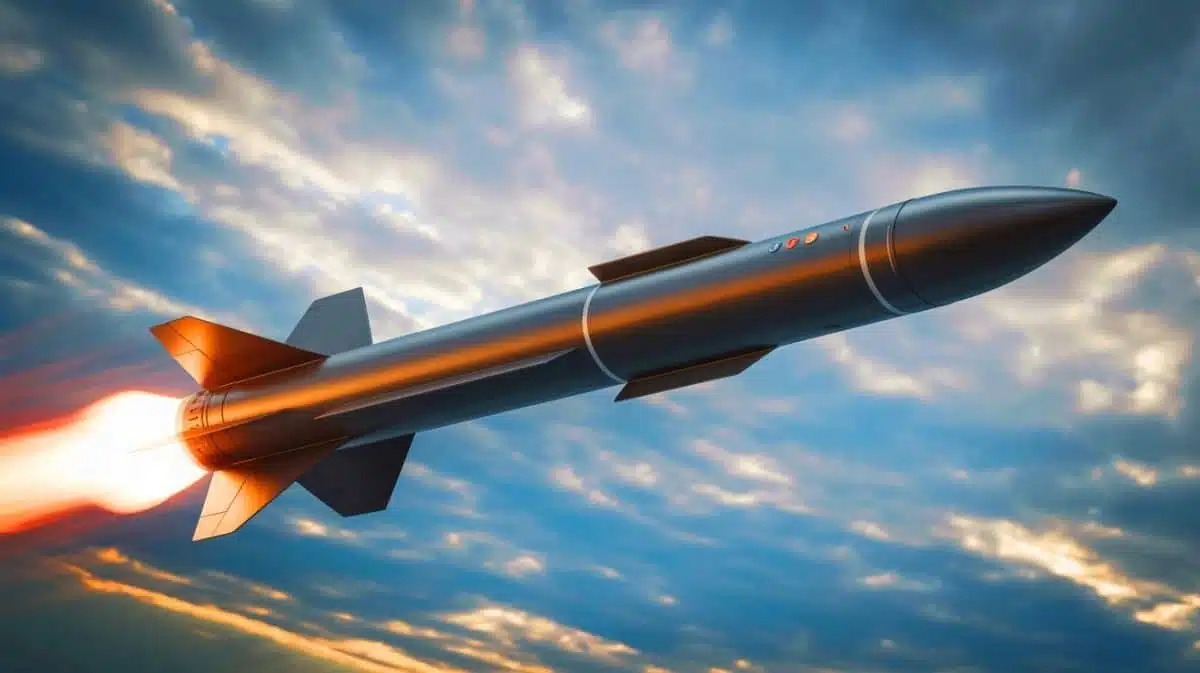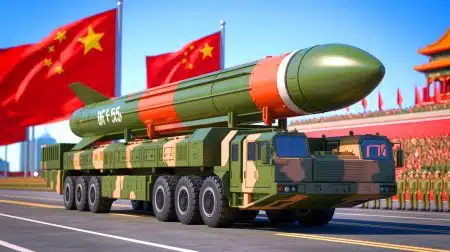| IN A NUTSHELL |
|
In a world where geopolitical tensions are ever-present, the United States has taken a significant step in reinforcing its strategic defense capabilities. The introduction of the AGM-181A Long-Range Standoff (LRSO) missile marks a pivotal development in the US Air Force’s arsenal. This new nuclear-armed cruise missile, crafted by Raytheon, is designed to ensure the United States maintains a credible deterrent against potential adversaries. With its anticipated stealth features and resilience against electronic attacks, the LRSO is poised to navigate the complex landscapes of modern warfare. But what makes this missile a game-changer in the realm of defense?
US Next-Gen Nuclear Cruise Missile
The AGM-181A LRSO is set to replace the venerable AGM-86B Air-Launched Cruise Missile (ALCM), a workhorse of the Cold War era. This transition is crucial as the ALCM approaches obsolescence. The LRSO offers an advanced, low-observable, subsonic weapon capable of launching from standoff distances. It can penetrate sophisticated air defense systems and strike high-value targets even in contested environments. Armed with the W80-4 thermonuclear warhead, the missile promises enhanced yield, safety, and security features.
The specifics of the missile’s design remain classified, yet it’s believed to boast a next-generation airframe and propulsion system that minimize radar and infrared detection. The LRSO is expected to function in GPS-denied environments, leveraging stringent emission controls and advanced electronic warfare countermeasures. With autonomous threat avoidance and adaptive targeting, the missile can dynamically navigate through hostile territories, maintaining a strategic edge.
“French Navy’s Innovative Trial”: One-Way Attack USV Successfully Tested Against Target at Sea
Moreover, the LRSO will not operate in isolation. It forms a part of a larger, integrated strike architecture that includes the B-21 Raider, the Air Force’s cutting-edge stealth bomber, and the upgraded B-52 Stratofortress. Together, these platforms, along with space-based sensors and command systems, create a networked strike package ready for modern deterrence missions.
US Nuclear Posture
The introduction of the LRSO comes as the United States reassesses its nuclear posture in the face of rapid advancements by Russia and China in strategic capabilities. The missile’s standoff range is a crucial asset, providing flexible deterrent options that are vital for signaling, escalation control, and de-escalation in volatile situations. Unlike traditional intercontinental ballistic missiles, bombers equipped with standoff weapons can be forward-deployed, held on alert, or even recalled mid-mission, offering a strategic flexibility that is invaluable in crisis management.
While the LRSO’s development details are shrouded in secrecy, indications suggest steady progress. The missile is expected to become operational in the latter half of the decade, though its future depends on defense budget allocations. The Pentagon’s 2022 estimates project a cost of $16 billion for 1,020 missiles, with $7 billion set aside for lifecycle support over 30 years, placing the unit cost at approximately $14 million. Though initially considered, plans for a conventional version have been shelved, with the AGM-158 JASSM family continuing to handle non-nuclear roles.
Filling a Crucial Gap
As the aging ALCM nears obsolescence and with no other nuclear cruise missile in service, the LRSO is set to fill a critical void in US deterrence strategy. This missile represents more than just an advanced weapon; it is a declaration of continued US resolve amidst a climate of great power competition. The LRSO’s anticipated capabilities reflect a commitment to maintaining strategic superiority and ensuring national security in an unpredictable global landscape.
The unveiling of the LRSO has captured the attention of defense analysts and policymakers alike, signifying a pivotal moment in the evolution of US military capabilities. As tensions simmer on the global stage, the AGM-181A stands as a testament to the US’s strategic foresight and technological prowess in the realm of defense.
Looking Ahead
As the LRSO inches closer to operational readiness, its implications for US defense strategy and global security dynamics become increasingly significant. The missile’s combination of stealth, resilience, and precision positions it as a formidable tool in the US’s strategic arsenal. Its integration into a broader networked architecture further enhances its potential impact, offering a robust deterrent against emerging threats.
The future of the LRSO, however, hinges on several factors, including defense budget priorities and geopolitical developments. As the US navigates the complexities of modern warfare, the LRSO could play a crucial role in shaping the balance of power. With its transformative capabilities, how will the AGM-181A LRSO influence the strategic calculus of both allies and adversaries in the years to come?
Did you like it? 4.6/5 (20)







Wow, $16 billion for 1,020 missiles! That’s quite the price tag. How does this compare to previous missile programs? 💸
Why is it called “Long-Range Standoff”? What does “standoff” even mean in this context?
Another step in the arms race? 🤔
Can these missiles really evade all modern defense systems, or is that just marketing hype?
The B-52 is still in service? Thought those dinosaurs retired ages ago! 🦖
16 bilion dollars?! Couldn’t that money be better spent on healthcare or education?
Grateful for the detailed analysis. It’s important to understand the implications of such advancements.